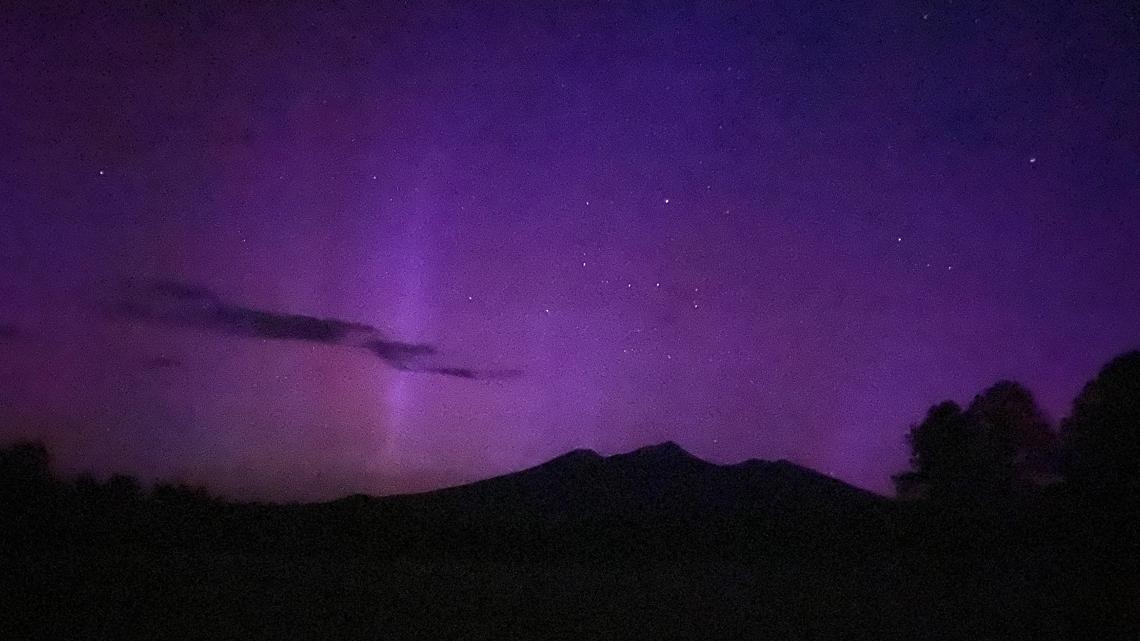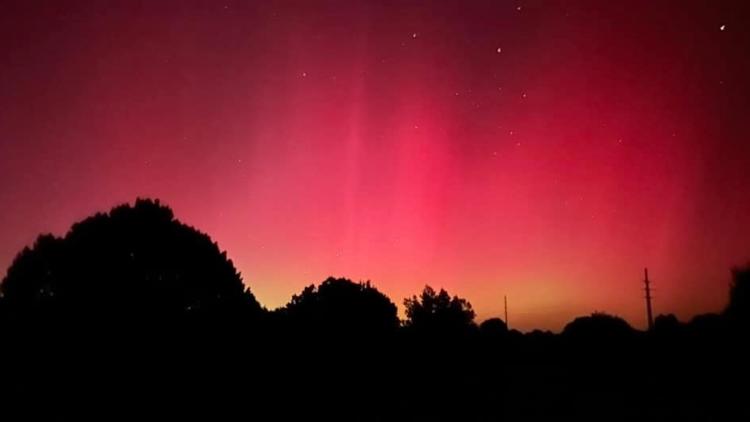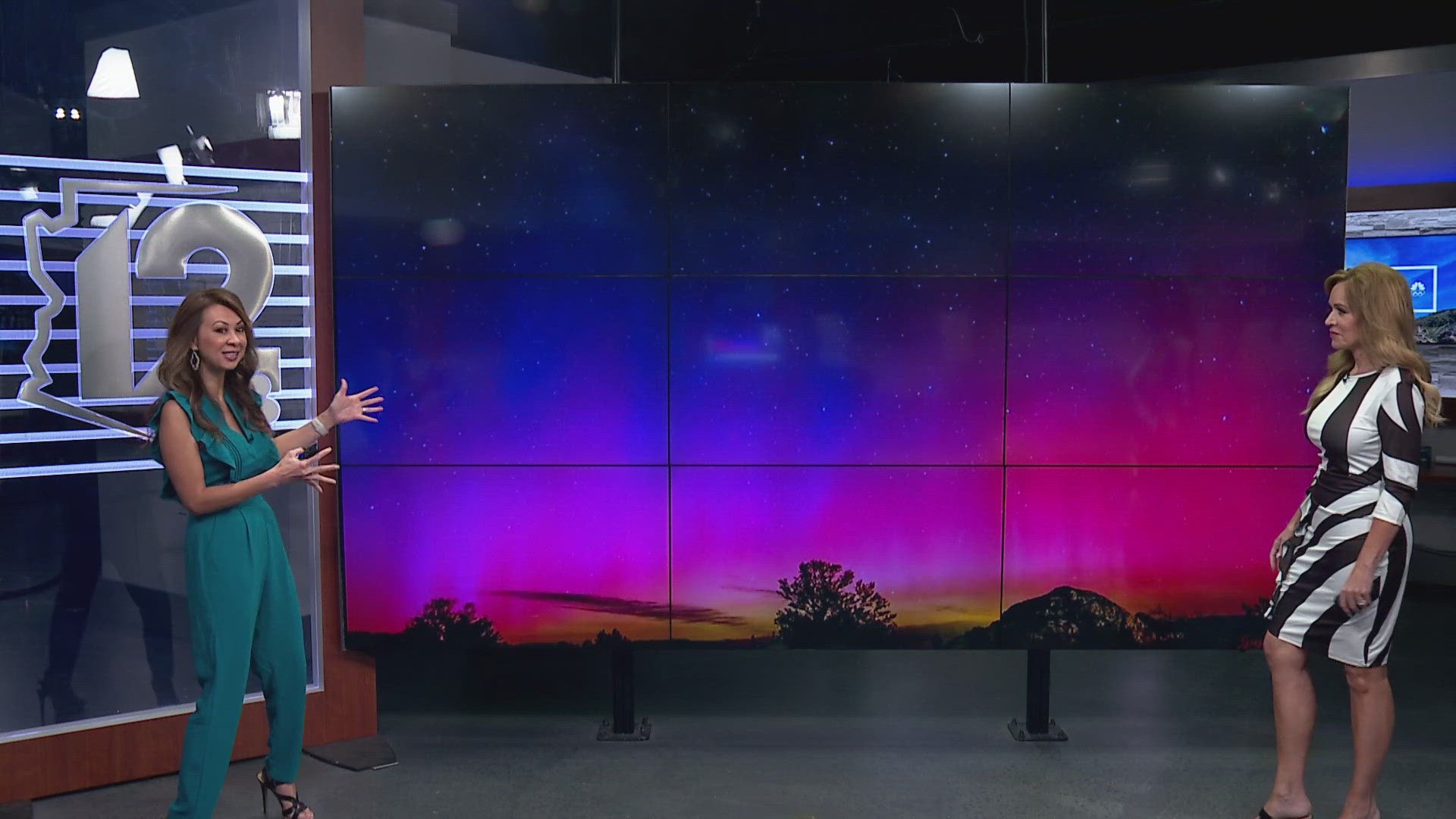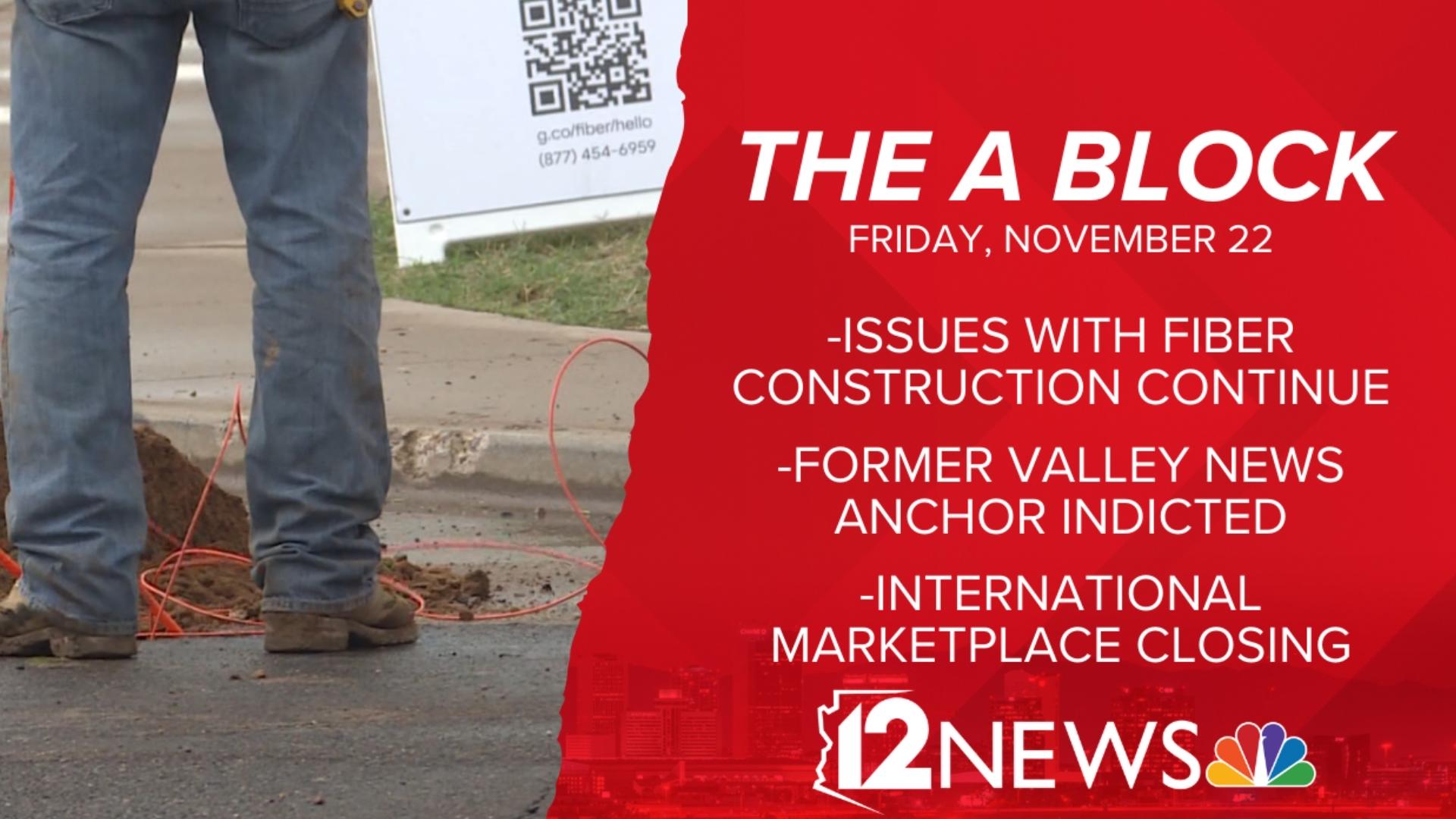FLAGSTAFF, Ariz. — Aurora Borealis? At this time of year? In this part of the country? Well, it wouldn't be the first time this year.
After northern Arizona — and much of the northern hemisphere — was treated to a celestial light show last month, the cluster of sunspots that brought the aurora to Arizona have circled the star and are facing Earth once again.
"It's really cool to see this sunspot come back around into view. It's actually quite rare
that that happens," Dr. Joe Llama with Lowell Observatory in Flagstaff said. "Most sunspots don't survive more than one full rotation around the sun."
Unfortunately, the odds of us being treated to the Northern Lights this time around are slim. These sunspots aren't in the middle of swallowing another region of the sun anymore.
"Multiple regions of magnetic activity can erupt on the sun, and they can kind of fuse together into into one super sunspot region," he explained.


When this gigantic sunspot cluster last visited our neck of the solar system, it was known as active region 3664 (AR3664). Catchy name, right? From early to mid-May, AR3664 collided and merged with another active region, kicking off a colossal barrage of radioactive solar flares from the ensuing tangle of magnetic fields.
"What happens is you get these very eruptive features," Llama said. He said it's like "You take a rubber band and you just twist and twist and twist and twist, and ultimately it's going to snap. And when it does that, it ejects all this material out into the interplanetary medium."
This process caused the sun to shed massive blobs of plasma known as coronal mass ejections. As these solar events struck Earth's magnetic field, they triggered a geomagnetic storm powerful enough to cause the Northern Lights in regions as far south as Arizona.
But the sun spins quickly, taking roughly 27 days to make a complete rotation. That brought AR3664 away from us onto the far side of the sun, giving it time to stabilize and break down. Now that it's come back around with a new name — AR3697 — the region is smaller and less active.
>>Editor's Note: The above video is from a previously aired broadcast.
And, sadly, "the best time for this sunspot to have caused aurora here on Earth was actually a day or so ago," Dr. Llama said. He explained that the sunspots have to erupt within a certain time frame for the material and energy they eject to cross Earth's orbit.
In May, we were treated to X-class solar flares, the largest of the categories. This time, AR3697 sent out a few X-class flares but has mostly been sending out M-class flares. While still several times larger than the Earth, these are only about a tenth as strong as X-class flares.
Even without an Arizona aurora, those of us with an eye for the sky are still in for a treat over the next few years.
The sun goes through an 11-year cycle of low activity to high activity and is currently ramping up into peak activity. Dr. Llama expects that we'll hit solar maximum around July of next year.
"Although the sunspot coming around this time won't cause some aurora for us here in Arizona, I would highly encourage viewers and listeners to keep an eye on space related news," Dr. Llama said. "We're coming into solar maximum now, so this is the time to look out for the aurora and keep an eye out for those alerts."
>> Download the 12News app for the latest local breaking news straight to your phone.
WE ❤ ARIZONA
Explore amAZing people, places and things across our state on our 12News YouTube playlist here.




